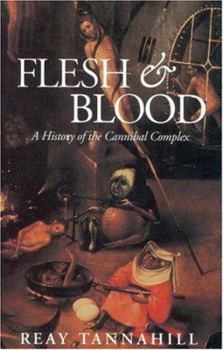Flesh and Blood: The History of the Cannibal Complex
Select Format
Select Condition 
Book Overview
Presenting a history of cannibalism, this text shows how in primitive times, human game was treated just as any other, and both the prophet Muhammed and Richard the Lionheart consumed the bodies of... This description may be from another edition of this product.
Format:Paperback
Language:English
ISBN:0316837059
ISBN13:9780316837057
Release Date:January 1997
Publisher:Little Brown and Company
Length:320 Pages
Weight:3.30 lbs.
Dimensions:1.0" x 5.0" x 7.8"
Customer Reviews
1 rating
Repetetive but enlightening
Published by Thriftbooks.com User , 16 years ago
This nonfiction piece follows the history and literary aspects of the most taboo eating derivation humankind can think of: cannibalism. Extensive time is spent expatiating the history of vampirism. The overarching theme of the book is the fact that xenophobic claims of cannibalism were a tool used by early explorers to 1.) secure more funding for missionary work amongst far flung parts of the world (not Europe) and 2.) aid in cognitive dissonance for the extermination of native peoples that they encountered. The book is very expansive in what it covers. Recently, the hypothesis that no culture consistently participated in the commonplace cannibalistic acts, but did so only ceremonially/religiously. The book highlights the fact that famine drove many people to adopt temporary cannibalistic acts, and thus has some excellent first person quotes of the starvation induced depravity. Between cataloging these two aspects it becomes apparent that cannibalism is a part of the human condition, be it through transmogrification at church, stories of how bad it is somewhere else, or the newest zombie/vampire craze. The book needs an update. The prion disease of Papua New Guinean caused by consumption of human brains was omitted and would have thoroughly debunked the "no societal cannibalism" hypothesis. Cannibalism in other closely related primates could have made a good comparative evolutionary psychology themed chapter. The book is slowed by copious (and sometimes snarky) footnotes.






